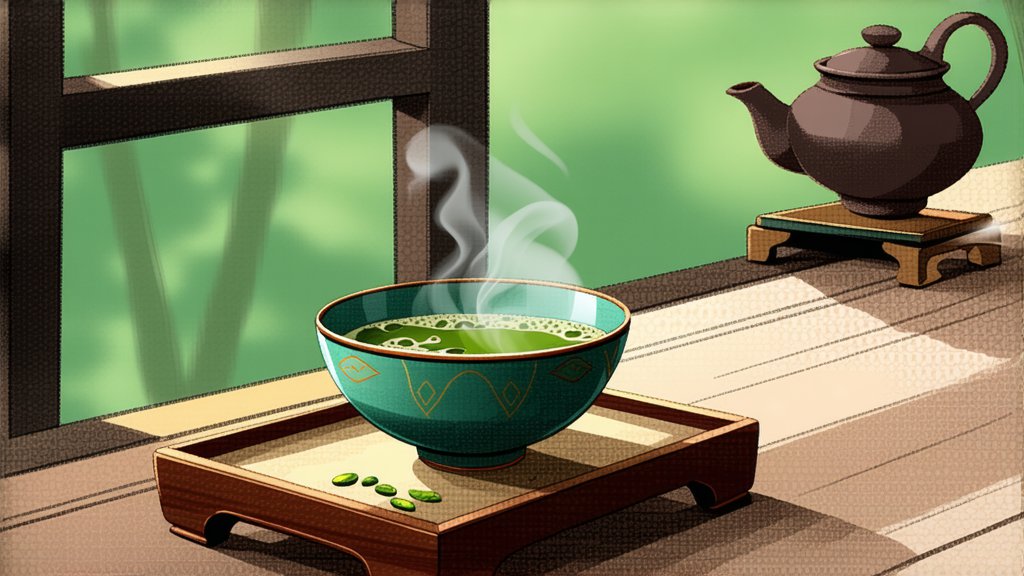
Tie Guan Yin, also known as Iron Goddess of Mercy, is a renowned variety of Oolong tea that hails from the Fujian province of China. This tea is celebrated for its complex flavors, fragrant aroma, and the rich history that accompanies its production. In this article, we will delve into the origins, varieties, craftsmanship, and the art of appreciating Tie Guan Yin Oolong tea.
History of Tie Guan Yin
The history of Tie Guan Yin dates back to the Qing Dynasty, around the 18th century. Legend has it that a poor farmer named Wei, while passing by a temple, found a withered tea plant near an iron statue of Guan Yin, the Goddess of Mercy. He took the plant home, cultivated it, and produced a tea so exceptional that it became known as Tie Guan Yin, or Iron Goddess of Mercy. This tea quickly gained popularity and became one of the most revered teas in China.
Varieties of Tie Guan Yin
Tie Guan Yin is categorized into two main types based on the fermentation and oxidation levels: light and heavy fermentation.
-
Light Fermentation Tie Guan Yin: This variety is closer to green tea in terms of oxidation, with a lighter color and a more floral aroma. It is often referred to as "Qing Xiang" and is appreciated for its fresh, green, and slightly sweet taste.
-
Heavy Fermentation Tie Guan Yin: This type is more oxidized, resembling black tea in color and taste. It is known as "Nong Xiang" and is characterized by a stronger, more robust flavor profile with hints of caramel and fruit.
Craftsmanship of Tie Guan Yin
The production of Tie Guan Yin is a meticulous process that involves several steps:
-
Picking: The tender leaves and buds are handpicked, usually in the early morning when the dew is still on the leaves. This ensures the freshest and most delicate flavors.
-
Withering: The leaves are spread out to wither under the sun, which helps to reduce their moisture content and initiate the oxidation process.
-
Shaking and Bruising: This is a unique step in Tie Guan Yin production where the leaves are shaken and bruised to release their natural aromas and flavors. This process is repeated several times throughout the oxidation period.
-
Oxidation: The leaves are allowed to oxidize, which can range from 10% to 70% depending on the desired flavor profile. This is a crucial step that determines the final character of the tea.
-
Killing Green: The oxidation process is halted by heating the leaves, which also helps to fix the color and flavor.
-
Rolling: The leaves are rolled to further shape them and to enhance their flavor.
-
Drying: The final step is to dry the leaves to reduce the moisture content to a safe level for storage.
Appreciating Tie Guan Yin
Tasting Tie Guan Yin is an experience that engages all the senses. Here are some steps to fully appreciate this tea:
-
Aroma: Before brewing, take a moment to smell the dry leaves. The aroma can range from floral and fruity to creamy and nutty, depending on the fermentation level.
-
Brewing: Use water that is just off the boil (around 95°C or 203°F) and steep the tea leaves for about 1-3 minutes, depending on personal taste preferences.
-
Tasting: Sip the tea slowly and let it roll around your mouth to appreciate its complexity. The taste can be sweet, floral, creamy, or even earthy, with a lingering aftertaste.
-
Multiple Infusions: Tie Guan Yin can be infused multiple times, with each infusion revealing different nuances of the tea. The first infusion often brings out the most delicate flavors, while subsequent infusions can be more robust.
-
Aftertaste: Pay attention to the aftertaste, which is a key characteristic of high-quality Oolong teas. A good Tie Guan Yin should leave a refreshing and lingering sensation on the palate.
In conclusion, Tie Guan Yin is more than just a tea; it is a cultural icon and a testament to the centuries-old tradition of Chinese tea craftsmanship. Its unique production process and the depth of its flavors make it a favorite among tea connoisseurs worldwide. Whether you are a seasoned tea drinker or a newcomer to the world of Oolong, Tie Guan Yin